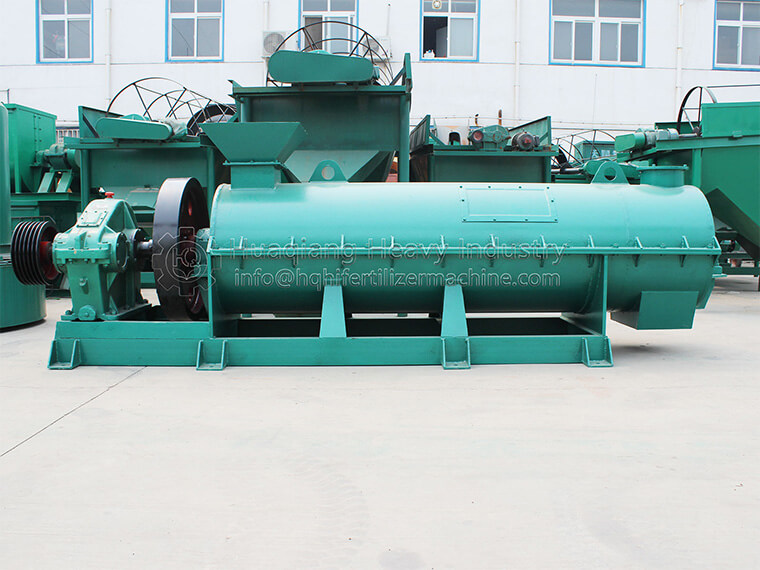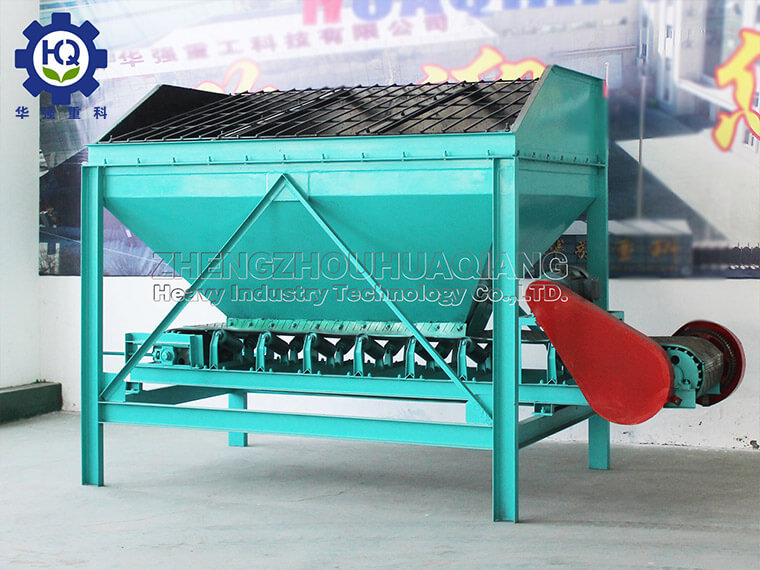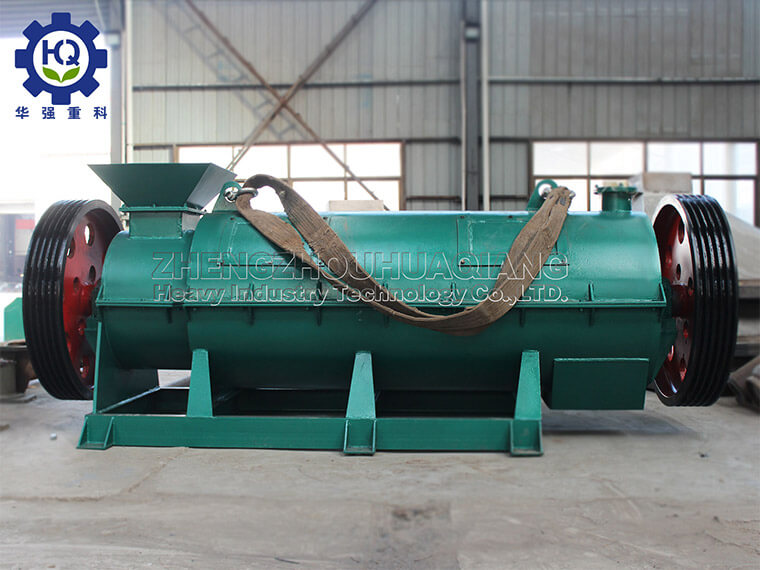The commonly used equipment for extrusion granulation is the roller extrusion granulation machine, which is a widely used granulation machine in organic fertilizer granulation machines. It belongs to the extrusion sliding model and can continuously produce a single roll forming process, and can achieve a dry free effect when using specific formulas. In addition, the mechanical types that belong to the same category of extrusion granulation equipment include flat mold granulation machines, ring mold granulation machines, and twin screw granulation machines.
The special equipment for granulation in the compound fertilizer production line is the roller extrusion granulation machine, which is driven by an electric motor with a belt and pulley. It is transmitted to the driving shaft through a reducer and works synchronously with the passive shaft through a split gear. Through mold extrusion molding, demolding granulation, crushing and separation, uniform granulation is achieved. The extrusion mold is meticulously forged with high-quality anti-corrosion wear-resistant materials, and the mold shape adopts a flat ball shape.
The special equipment for granulation in the compound fertilizer production line adopts an eugenic formula for the roller extrusion granulation machine, which does not require drying and is produced at room temperature. The product is rolled and formed in one go, ensuring that the quality of the product meets the technical requirements of compound fertilizer. It is a new generation of energy-saving and consumption reducing products used in the production of high, medium, and low concentration specialized compound fertilizers for various crops and the compound fertilizer industry.
The special equipment for granulation in the compound fertilizer production line has the advantages of a certain scale production capacity, low energy consumption, convenient operation, and zero discharge of three wastes in the extrusion granulation process of the roller extrusion granulation machine. Specialized compound fertilizer is a combination of large amounts of elemental fertilizers such as nitrogen, phosphorus, potassium, medium and trace element fertilizers, humic acid organic matter, and other raw materials. It is widely used in various growth stages of crops such as fruit trees, vegetables, and grains, effectively saving fertilization costs, improving fertilizer utilization rate, and significantly improving crop quality and yield. Therefore, The extrusion granulation process for producing specialized compound fertilizers is the trend of future agricultural production fertilizers.
The organic fertilizer extrusion granulation equipment was first applied in the field of fertilizers for the granulation of potassium chloride, and can also be used for the production of granular (1-4mm) required for blended fertilizers (BB fertilizers). Wide adaptability of raw materials, suitable for granulation of various raw materials such as compound fertilizers, pharmaceuticals, chemicals, feed, etc. The product has a high granulation rate and can produce multiple concentrations and types of compound fertilizers (including organic fertilizers, inorganic fertilizers, biological fertilizers, magnetized fertilizers, etc.), especially the granulation of rare earth, potassium fertilizers, and ammonium bicarbonate series compound fertilizers, filling the domestic gap and leading the domestic level.

.jpg)





.jpg)
